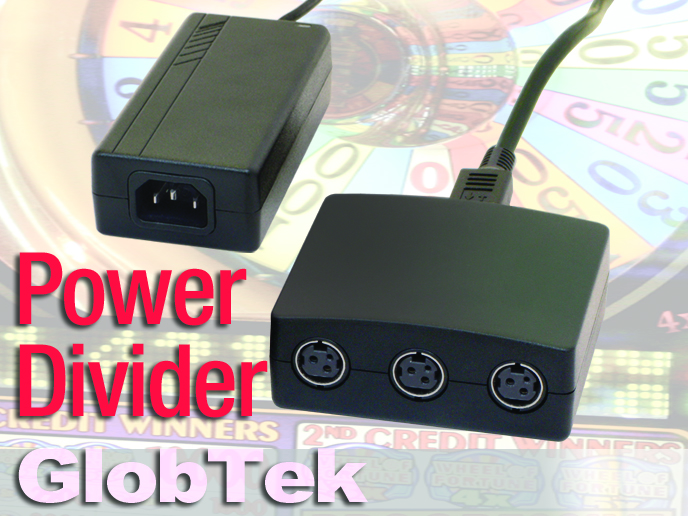Energieverteilung in einer Mehrgeräte-Kioskumgebung
By Alix Paultre, GlobTek (www.globtek.com)
In environments where hard use and high reliability requirements meet, power distribution considerations become critical infrastructure decisions. Sometimes driving multiple devices in a multi-user kiosk application requires separate power supplies, and sometimes such a system can be served by using a flexible power distribution method.
For example, we here at GlobTek had a casino customer with a need to drive multiple thermal printers used in the customer tracking system that was integrated into their gaming machines. Slot machines and other gambling devices dont give out quarters anymore, they give out paper. These printers needed to serve both gambling and non-gambling customer systems to enable them to deliver receipts, coupons, and other hard-copy materials to customers around the clock. The first thought that may come to mind might involve simply running a tap off of the served machines power supply for the printers. But there are a lot of problems with that approach. The most obvious that come to mind immediately involve the system power budget, product performance, and security.
Power Budget
The designer of the gambling device or video game wanted a power supply for it with a total system consumption in mind, but the system didnt have much leeway in the area of continuous power available to attach a peripheral device drawing anywhere from 10 to 15 watts. Some systems may have generous surge power margins, but you cant use surge power to drive a current-needy peripheral. The other major issue would be device security. You cant simply reach into the guts of a licensed gambling machine at whim without opening a Pandoras box of issues from electronic interference changing probabilities in the device to regulatory issues of access to the systems electronics.Once the need to bring in an external (embedded in the cabinet or external to the system entirely) supply to power the printers became apparent, the question shifted to the nature of the supply and how to reduce cost in the face of the need to add major components to the mix. The customer initially requested a modified standard supply with multiple output cords (4) which would have required safety re-submittals for the supply as well as tooling, packaging, strain relief, and cable costs (5 figures). An in-line power distribution box solution was proposed, as the box would be on the low-voltage side of the power chain and therefore would not require safety re-submittals.
Dividing it all up
 GlobTek chose to use one supply for every three printers and the 1KPP-3KPP Power Divider to provide reliable scalable power independent of the primary device supply. This approach allowed the use of standard printer power connectors and cables, further reducing the cost and complexity of the solution. Other benefits included the ability to use off-the-shelf power supplies with no additional tooling or package reconfiguration needed. The resulting configuration minimizes system cost and eases repairs and replacements in the field. Another way to add safety and reliability would be by placing a resettable fuse at each output in the distribution block. In a pinch, the distribution boxes can also be used as line extenders in unusual deployment situations or field-expedient repairs without compromising system safety and reliability.
GlobTek chose to use one supply for every three printers and the 1KPP-3KPP Power Divider to provide reliable scalable power independent of the primary device supply. This approach allowed the use of standard printer power connectors and cables, further reducing the cost and complexity of the solution. Other benefits included the ability to use off-the-shelf power supplies with no additional tooling or package reconfiguration needed. The resulting configuration minimizes system cost and eases repairs and replacements in the field. Another way to add safety and reliability would be by placing a resettable fuse at each output in the distribution block. In a pinch, the distribution boxes can also be used as line extenders in unusual deployment situations or field-expedient repairs without compromising system safety and reliability.The resulting solution was able to directly address all of the customer requirements without having to go to specialty power supplies with multiple outputs that would have required additional approvals. This case demonstrated that many problems can be easily addressed with a little out of the box thinking and by looking at other parts of the power chain for the solution.